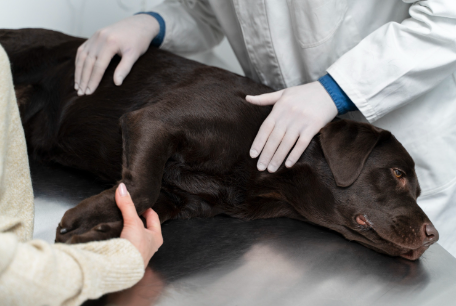Dog Gland Removal: Understanding the Pros and Cons

In the realm of guardianship for our cherished quadruped companions, the caretakers oftentimes grapple with arduous choices, notably concerning the proposition of conducting glandular ablation. The glands in discourse, typically the anal sacs situated flanking a canine’s posterior, serve a pivotal role in exuding an odorous essence distinct to each canine, employed for demarcating territory and social intercommunication.
Albeit, when said glands manifest complications, they instigate discomfort and potential health predicaments, hence the contemplation of anal sacculectomy. Dog gland removal pros and cons discourse elucidates the merits and demerits of canine glandular excision, furnishing custodians with perspicacious data to forge enlightened determinations.
The Grounds for Glandular Ablation
Canines may endure sundry afflictions pertaining to their anal glands, such as obstruction, infection, and suppuration. Obstruction materializes when the glands fail to evacuate naturally during defecation, engendering discomfort and potential infection. In extreme scenarios, the glands may develop abscesses that could perforate, inflicting acute agony and necessitating immediate medical intervention. Upon recurrent issues or ineffectiveness of conservative remedies, veterinarians might advocate for glandular ablation as a conclusive remedy.
Merits of Glandular Ablation
Liberation from Chronic Discomfort and Infection
A paramount benefit of glandular excision is the alleviation from the incessant cycle of agony, discomfort, and infection that canines with troublesome anal glands endure. Post-removal, canines are liberated from the peril of obstruction, suppuration, or infections in this region, culminating in an augmented quality of life.
Long-term Fiscal Advantages
Though the initial expenditure for glandular ablation may appear formidable, it harbors the potential for substantial fiscal savings across the canine’s lifespan. Recurrent veterinary consultations for gland expression, medications for infections, and treatments for abscesses accumulate financially. Conversely, the singular expense of the surgery can abrogate these ongoing costs.
Augmented Hygiene and Comfort
The excision of anal glands terminates the malodorous secretion associated with these glands, much to the relief of both canine and custodian. Furthermore, canines that habitually drag or lick their rear due to discomfort typically desist these actions post-surgery, leading to enhanced hygiene and comfort.
Demerits of Glandular Ablation
Surgical Hazards and Complications
As with any surgical intervention, glandular ablation encompasses inherent risks, including possible complications such as infection, hemorrhage, and adverse reactions to anesthesia. Additionally, there exists a risk of harm to adjacent tissues, including nerves, which could result in temporary or permanent incontinence. Though infrequent, these outcomes are grave considerations for custodians.
Convalescence and Post-Operative Care
The convalescence phase following glandular ablation can pose challenges for both the canine and custodian. Canines may experience anguish and discomfort, necessitating attentive management and possibly medications. The obligation for meticulous post-operative care, encompassing sanitation of the surgical site and prevention of the canine from licking or biting it, amplifies the custodian’s responsibilities.
Emotional and Behavioral Implications
For certain canines, especially those utilizing their gland secretions for more active communication, gland removal might engender behavioral modifications or stress. While not prevalent, it is imperative for custodians to monitor their pets for any indicative signs of distress or behavioral alterations post-surgery.
Forging an Informed Verdict
The decision to proceed with canine glandular ablation ought to be predicated upon thorough dialogue with a veterinarian. Aspects such as the severity and frequency of gland issues, the canine’s overall health, and the potential risks and benefits of the surgery should be meticulously evaluated. For some canines, glandular ablation may significantly ameliorate their quality of life, whereas for others, conservative management may be more advantageous.
Epilogue
Canine glandular ablation is a significant resolution necessitating deliberate contemplation of its pros and cons. While it furnishes relief from chronic discomfort and long-term savings, it also embodies surgical risks and necessitates a period of convalescence and care. By comprehending the rationale behind glandular ablation and assessing its merits against its demerits, custodians can formulate an informed decision that optimally serves the well-being and felicity of their canine companions.





